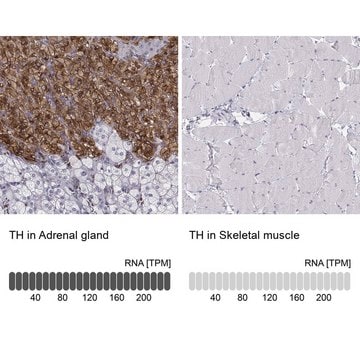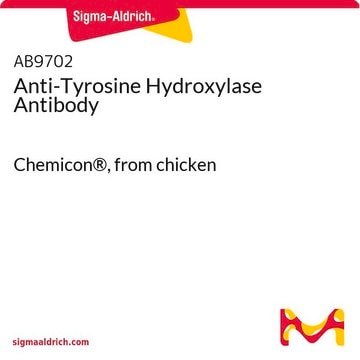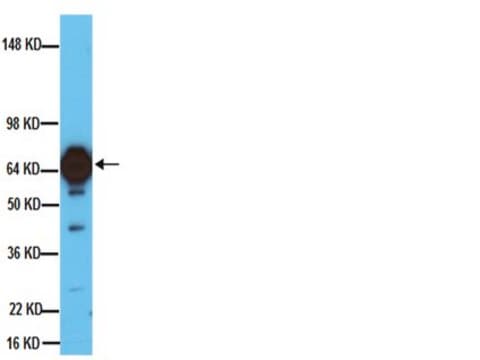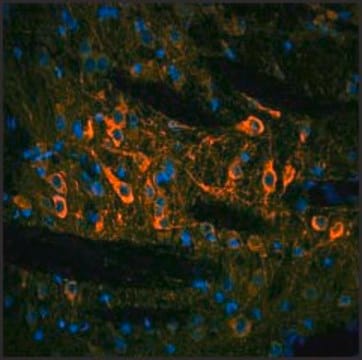T2928
Monoclonal Anti-Tyrosine Hydroxylase antibody produced in mouse
clone TH-16, ascites fluid
Synonim(y):
Anti-DYT14, Anti-DYT5b, Anti-TYH
About This Item
Polecane produkty
pochodzenie biologiczne
mouse
Poziom jakości
białko sprzężone
unconjugated
forma przeciwciała
ascites fluid
rodzaj przeciwciała
primary antibodies
klon
TH-16, monoclonal
zawiera
15 mM sodium azide
reaktywność gatunkowa
rat, sheep, human, monkey, bovine, rabbit, guinea pig
metody
immunohistochemistry: suitable
immunoprecipitation (IP): suitable using native or SDS-denatured TH.
microarray: suitable
western blot: 1:8,000 using extracts of cultured rat adrenal pheochromocytoma (PC12) cells.
izotyp
IgG1
numer dostępu UniProt
Warunki transportu
dry ice
temp. przechowywania
−20°C
docelowa modyfikacja potranslacyjna
unmodified
Opis ogólny
Specyficzność
Immunogen
Zastosowanie
- western blotting
- immunofluorescence labelling
- immunohistochemical staining
- enzyme linked immunosorbent assay (ELISA)
- dot blot
- immunoprecipitation
- immunocytochemistry
Działania biochem./fizjol.
Oświadczenie o zrzeczeniu się odpowiedzialności
Not finding the right product?
Try our Narzędzie selektora produktów.
polecane
Kod klasy składowania
10 - Combustible liquids
Klasa zagrożenia wodnego (WGK)
WGK 3
Temperatura zapłonu (°F)
Not applicable
Temperatura zapłonu (°C)
Not applicable
Certyfikaty analizy (CoA)
Poszukaj Certyfikaty analizy (CoA), wpisując numer partii/serii produktów. Numery serii i partii można znaleźć na etykiecie produktu po słowach „seria” lub „partia”.
Masz już ten produkt?
Dokumenty związane z niedawno zakupionymi produktami zostały zamieszczone w Bibliotece dokumentów.
Klienci oglądali również te produkty
Nasz zespół naukowców ma doświadczenie we wszystkich obszarach badań, w tym w naukach przyrodniczych, materiałoznawstwie, syntezie chemicznej, chromatografii, analityce i wielu innych dziedzinach.
Skontaktuj się z zespołem ds. pomocy technicznej















